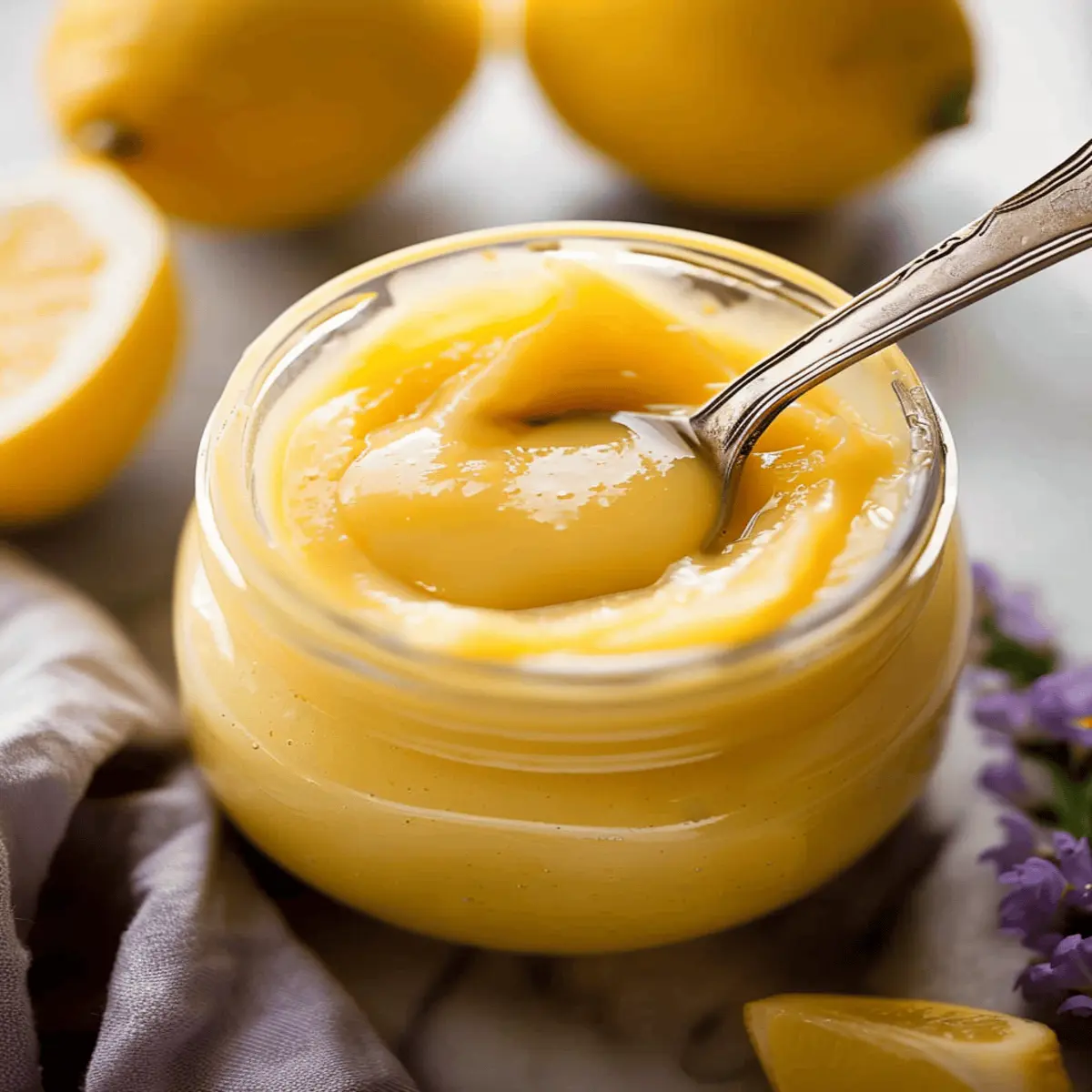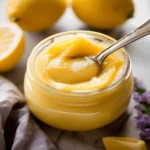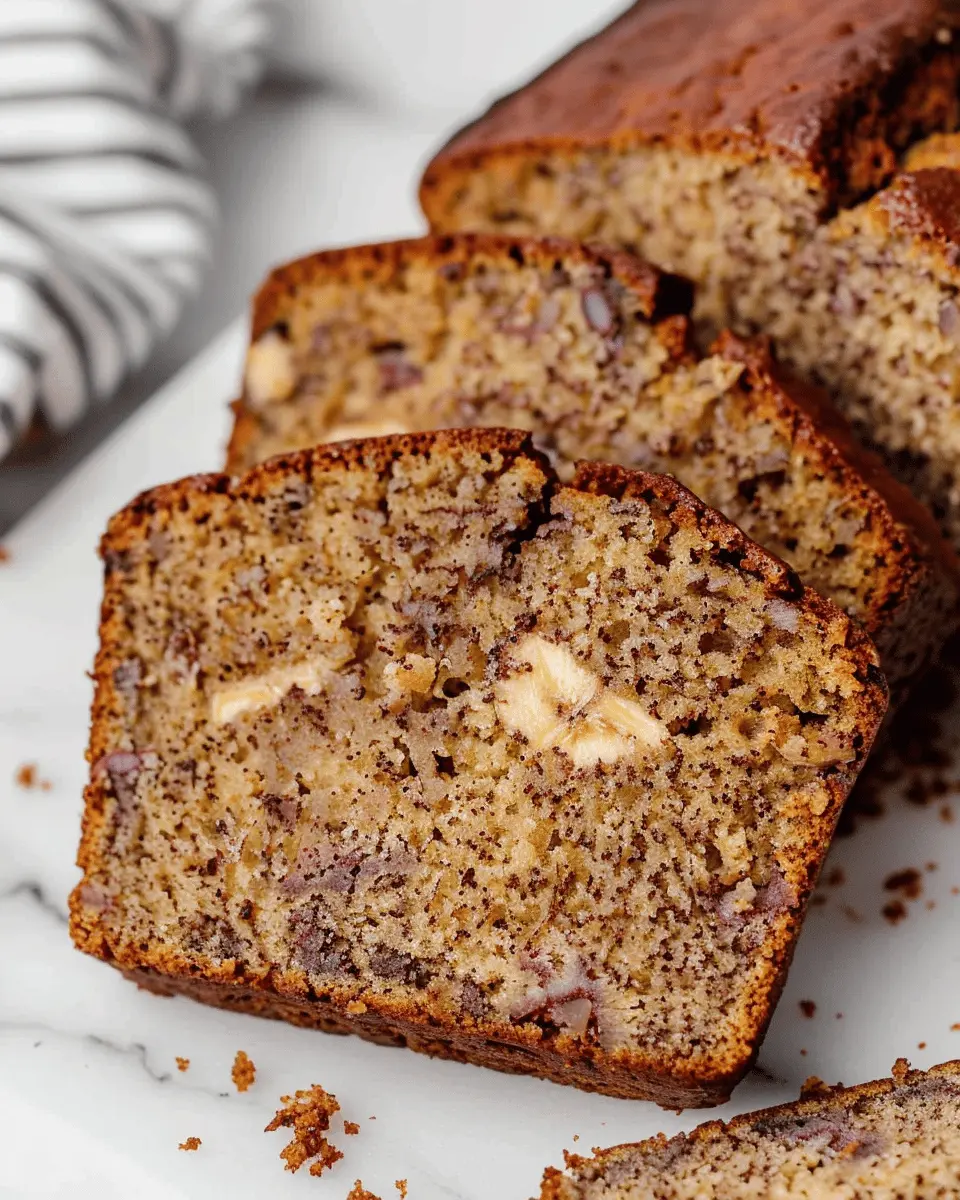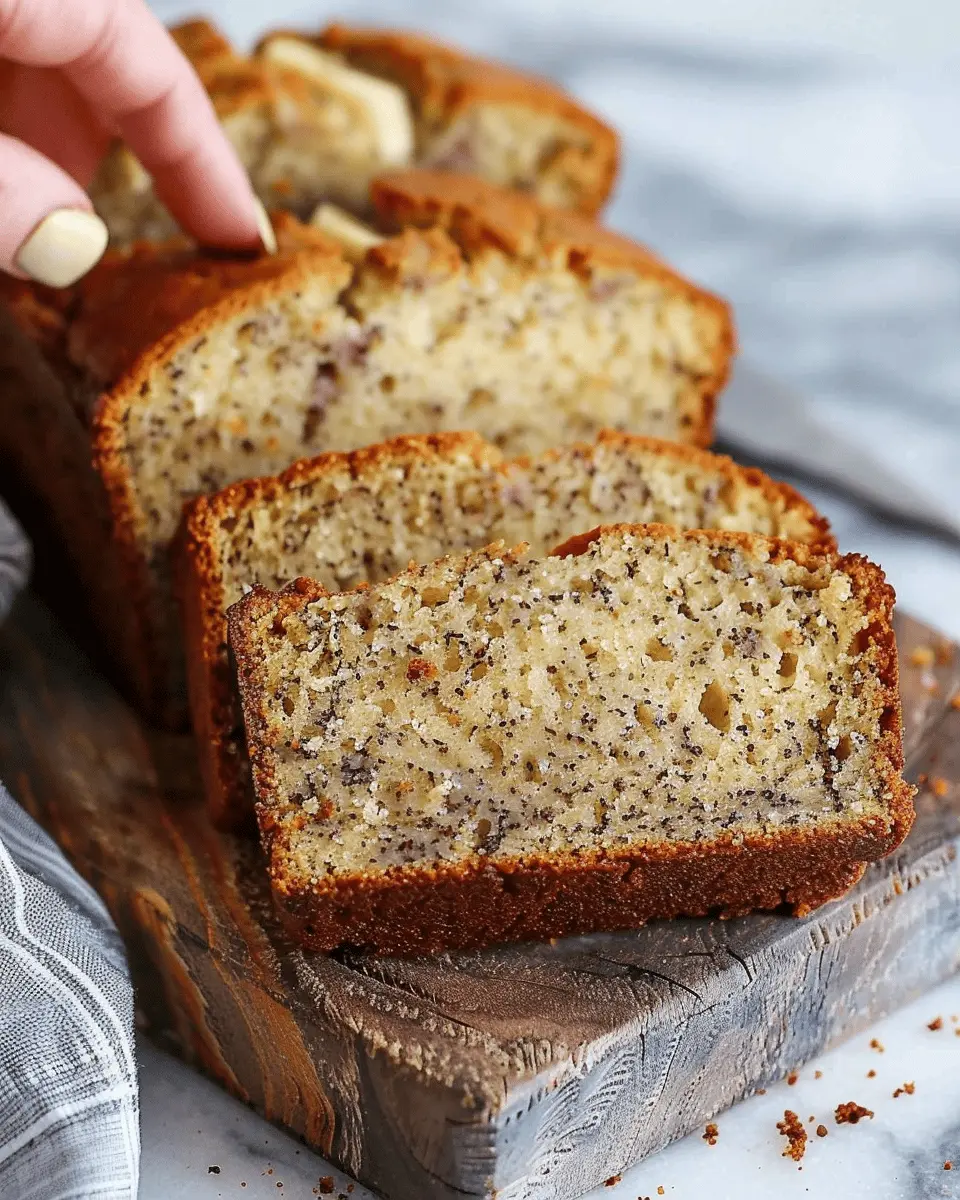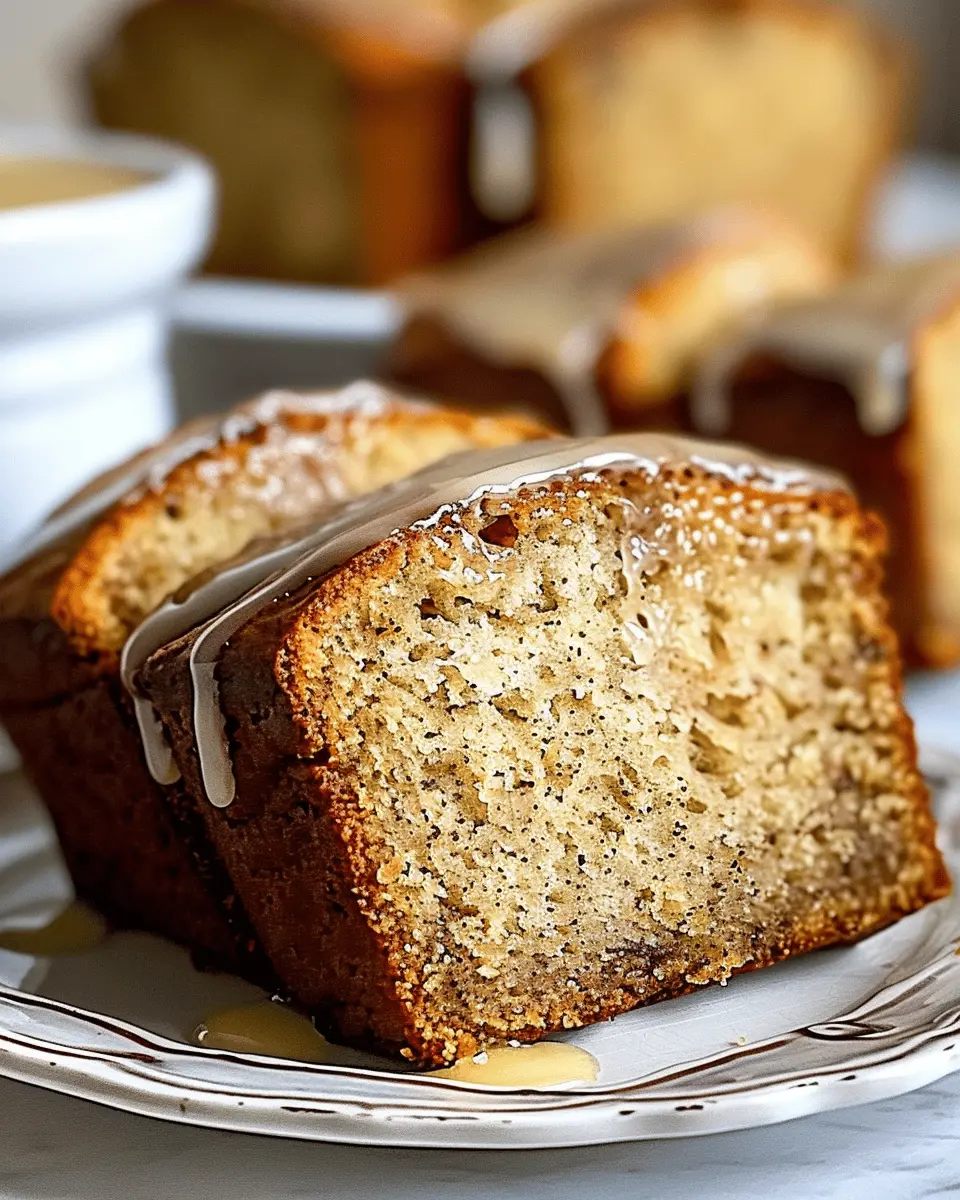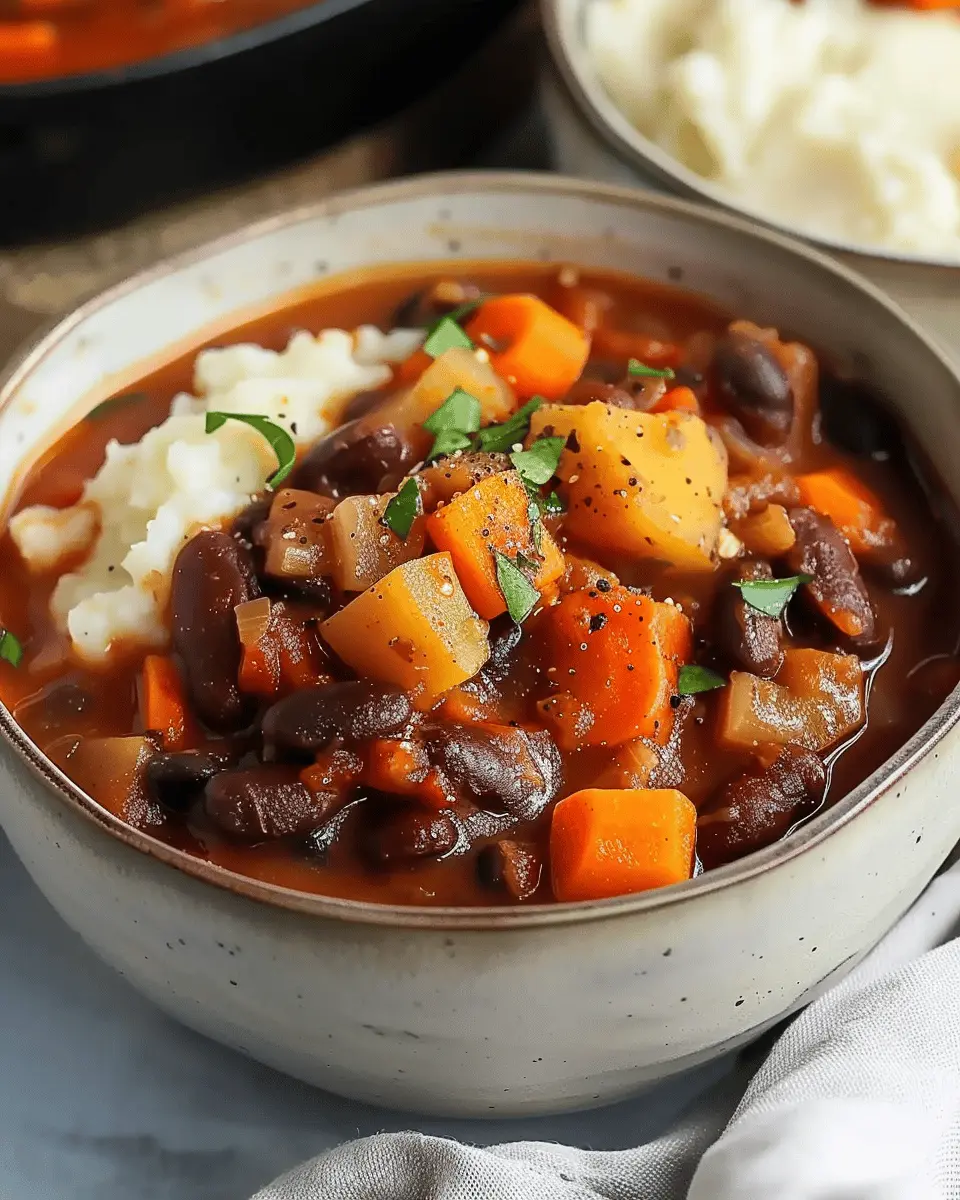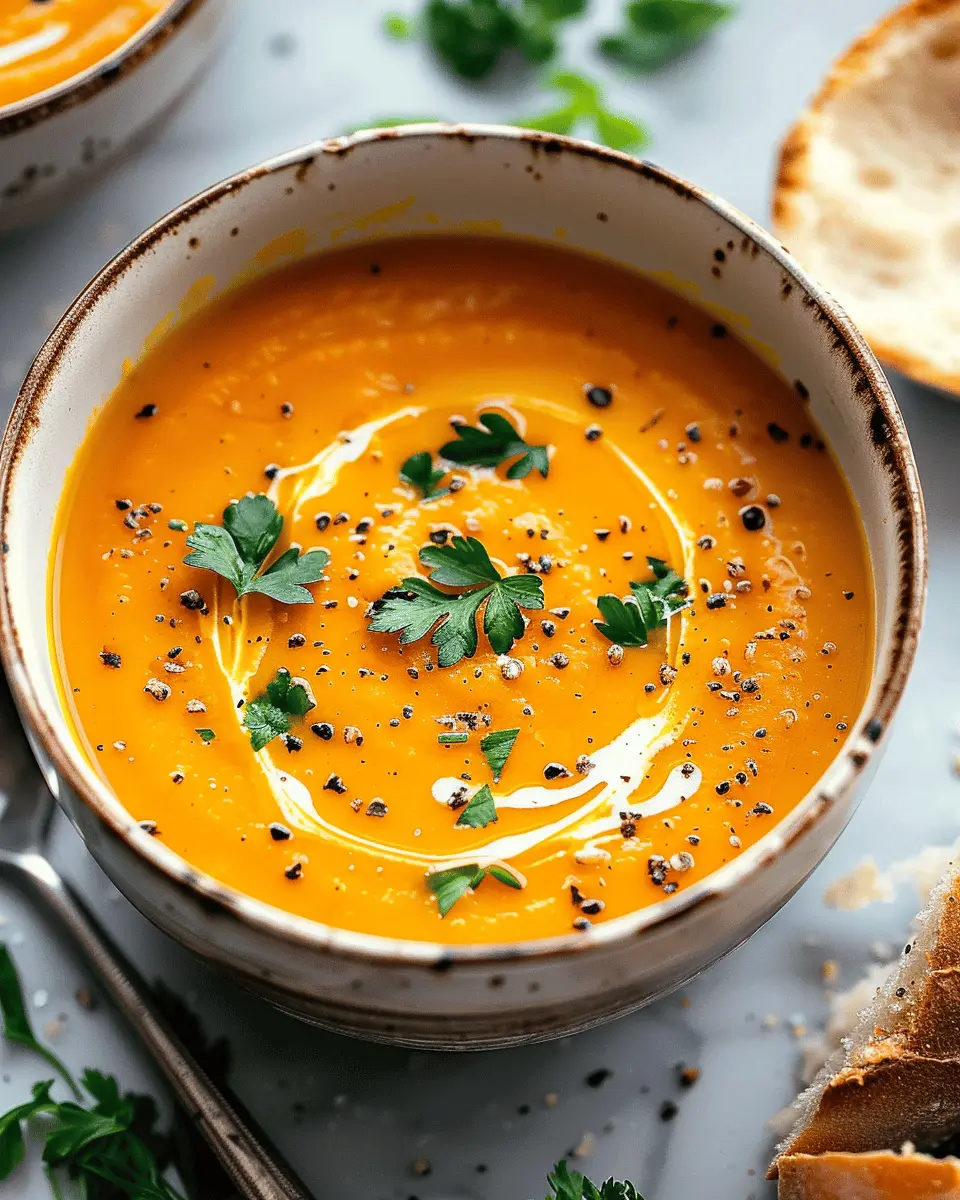Introduction to How to Make Lemon Curd
Lemon curd is one of those versatile ingredients that can transform your culinary creations from ordinary to extraordinary. Whether you’re dolloping it on scones, swirled into yogurt, or using it as a cake filling, lemon curd lets the vibrant flavor of fresh lemons shine through in the most delightful way. But why is it a kitchen essential? Let’s explore.
First off, lemon curd is incredibly easy to make, yet it feels like a gourmet treat. With just a handful of ingredients—lemons, eggs, sugar, and butter—you can whip up a batch that rivals any store-bought version. Plus, when you know how to make lemon curd at home, you can control the sweetness and tartness to match your taste preferences. Imagine using freshly squeezed lemons picked at their peak flavor, which elevates the dish even further!
It’s also an incredibly versatile component. Think of all the ways you can use lemon curd:
- Spread on breakfast toast or pancakes: Instantly brightens up your morning routine.
- As a filling for tarts and cakes: Elevates your dessert game and impresses guests.
- Mixed into salad dressings: Adds a zesty twist to your salads.
If you’re interested in exploring more about the uses of lemon curd, check out sources like Serious Eats or Bon Appétit.
Let’s not forget the health benefits of lemons, either. These tangy fruits are packed with vitamin C, antioxidants, and have anti-inflammatory properties. They can boost your immune system, aiding in overall health—making lemon curd not only delicious but also a bit nutritious!
In this article, you’ll learn step-by-step how to master the art of making lemon curd. From selecting the right lemons to achieving that perfect silky texture, we’ll cover it all. So, whether you’re a kitchen novice or a seasoned pro looking to add a new skill to your repertoire, get ready to brighten up your kitchen with this delightful treat!
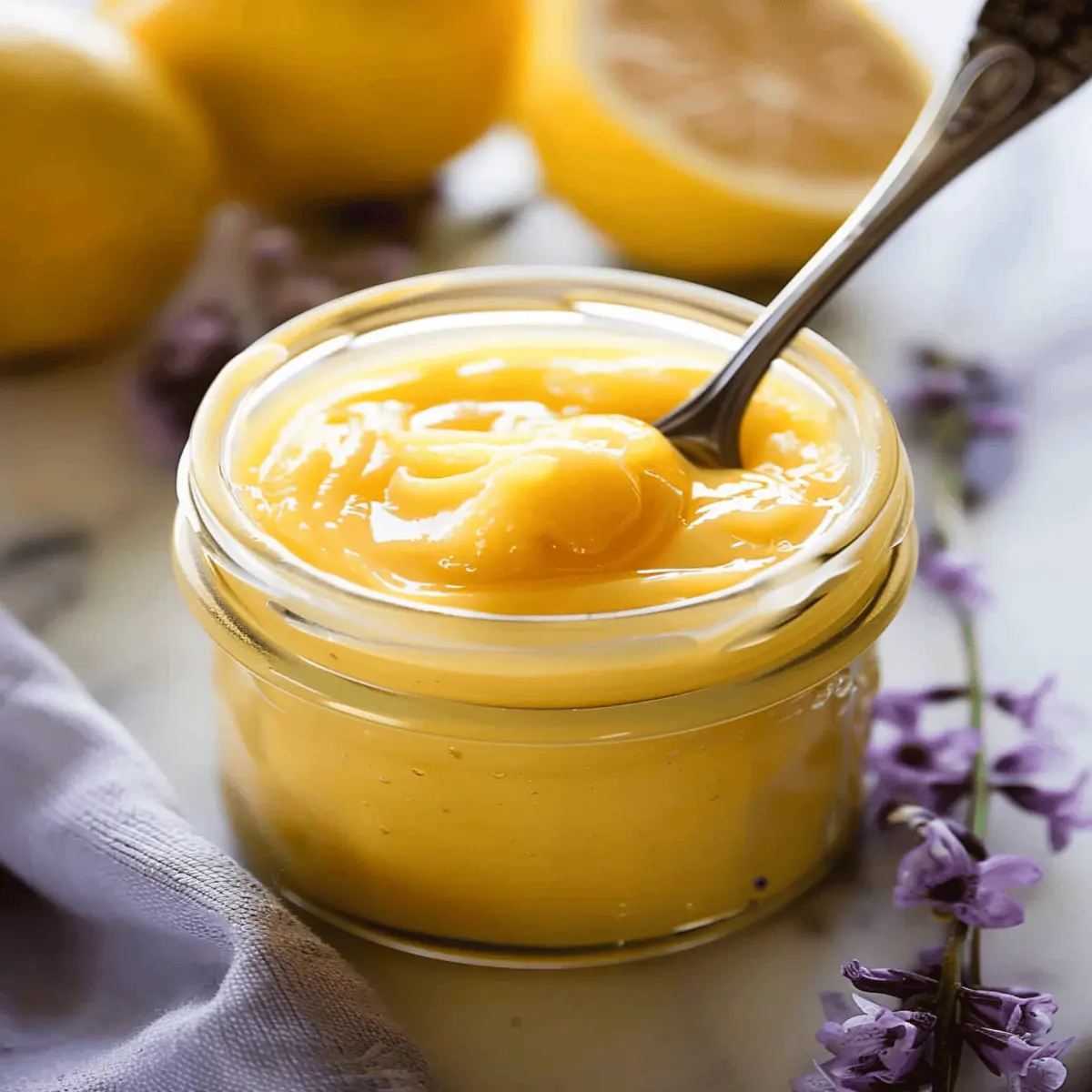
Ingredients for Lemon Curd
Fresh lemons: the star of the show
When it comes to learning how to make lemon curd, fresh lemons are absolutely essential. Bright, juicy lemons provide the tangy flavor that makes this dessert so delightful. Look for lemons that feel heavy for their size; this usually indicates juiciness. Did you know that one medium lemon yields about 2-3 tablespoons of juice? You’ll typically need 4-5 lemons for about one cup of juice—enough for a delicious, zesty curd!
Essential pantry staples
Alongside your fresh lemons, you’ll also need a few essential pantry staples to create the perfect lemon curd. Here’s what to gather:
- Granulated sugar: This sweetener balances out the tartness of the lemons.
- Eggs: They’re crucial for that creamy texture; go for large, fresh eggs.
- Butter: Unsalted butter works best for controlling the saltiness and achieving a rich flavor.
By having these ingredients on hand, you’ll be well on your way to mastering this delightful treat. For tips on selecting the best lemons or understanding emulsification, check out sources like Serious Eats or The Kitchn.
Step-by-Step Preparation of Lemon Curd
Making lemon curd might sound intimidating, but trust me, it’s a delightful and rewarding process! It’s the perfect balance of tart and sweet, making it an excellent addition to scones, tarts, or simply enjoyed on its own. Let’s walk through the steps together so you can whip up your own batch effortlessly.
Gather your ingredients
Before you begin, ensure you have everything you need. You’ll require:
- 4 large eggs
- 1 cup (200g) granulated sugar
- 1/2 cup (120ml) fresh lemon juice (about 2-3 lemons)
- Zest of 2 lemons
- 1/2 cup (115g) unsalted butter (cut into small pieces)
Having all your ingredients on hand makes the process smoother and more enjoyable. You can find fresh lemons at your local grocery store or farmer’s market for the best flavor. Here’s a guide on selecting the best lemons if you’re unsure!
Zest the lemons
Zesting is simple but plays a crucial role in imparting that lovely lemon flavor. Take a microplane or zester and gently scrape the outer yellow skin of the lemons, avoiding the white pith underneath, which can be bitter. You need about 1 tablespoon of zest. This step will significantly enhance your lemon curd with a burst of citrus aroma.
Whisk the eggs and sugar
Now it’s time to combine the eggs and sugar in a mixing bowl. Use a whisk to beat the mixture until it’s light and frothy, which should take about 1-2 minutes. This is where the magic begins – the sugar will help to incorporate air into the eggs. Want to know a pro tip? Use room temperature eggs for a better emulsification process!
Combine and heat the mixture
In a medium saucepan, combine the whisked eggs and sugar with the fresh lemon juice and zest. Stir everything together until well blended. Place the saucepan over medium heat. It’s important to consistently stir the mixture as it heats to prevent the eggs from scrambling. You’re looking for a thickened consistency, which usually takes about 8-10 minutes. If you’re curious about the science of temperature and its effects on custards, explore more here.
Strain for silky smoothness
Once the mixture has thickened, it’s time to achieve that silky texture we all adore in lemon curd. Use a fine-mesh sieve to strain the mixture into a clean bowl. This step removes any cooked egg bits and ensures your curd is luxuriously smooth.
Add butter and stir until creamy
Now, for the secret weapon: butter. Add your small pieces of unsalted butter to the warm lemon curd, and stir gently until it’s fully melted and incorporated. This process gives the curd that rich, creamy texture. Plus, the butter helps balance the tartness of the lemon, making each bite a little slice of heaven.
Cool and store
After your lemon curd has reached that velvety finish, allow it to cool to room temperature. Once cooled, transfer it into a jar or container. Store your curd in the refrigerator, where it can last for about two weeks. I recommend using it to elevate breakfast toast, or perhaps as a filling in cakes or pastries. Believe me, once you know how to make lemon curd, it’ll become a staple in your kitchen!
So there you have it! With these straightforward steps, you’re equipped to create your own lemon curd. Next time you’re looking for a quick and delightful treat, whip up this accessory – you’ll be amazed at how easy and delicious it is!
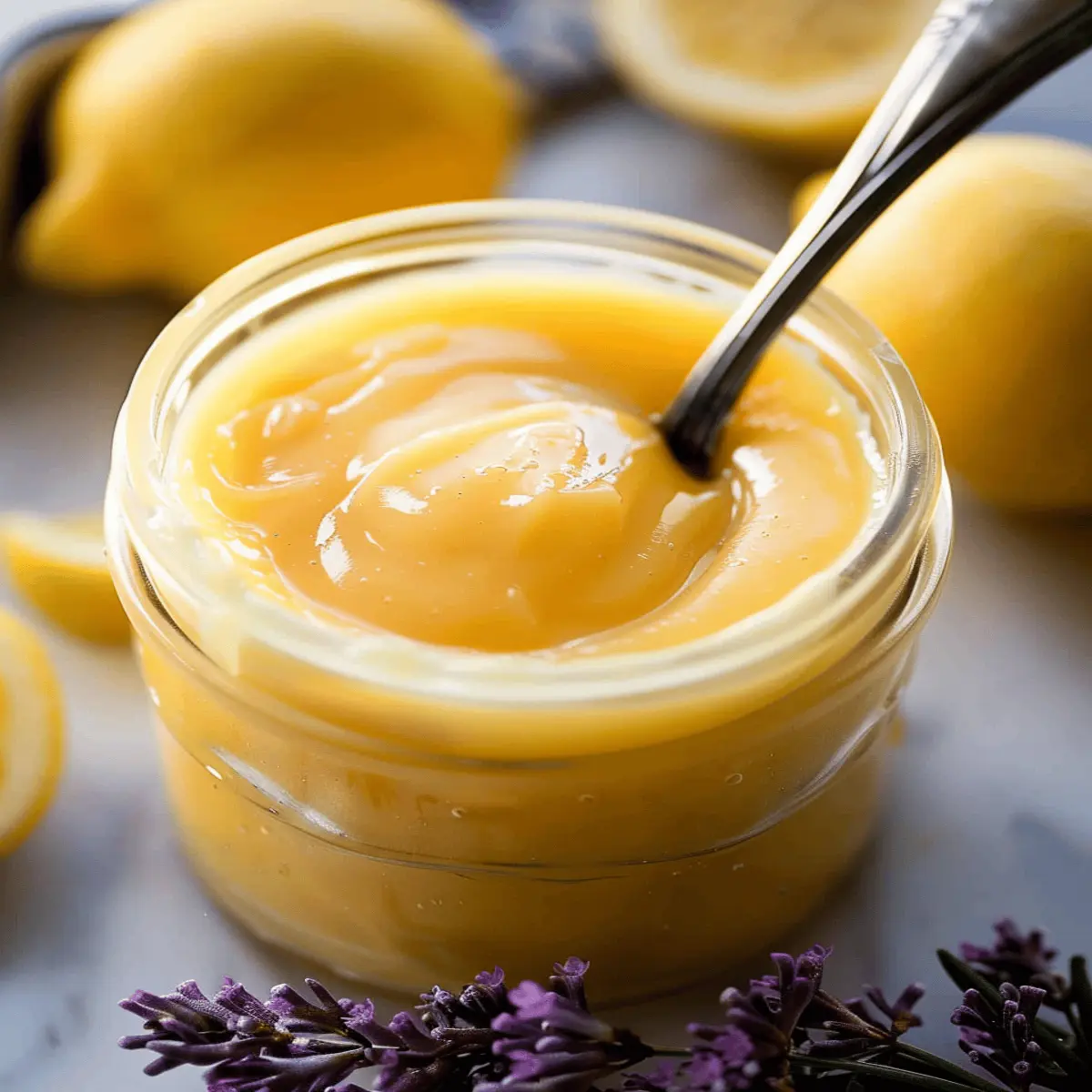
Variations of Lemon Curd
When it comes to how to make lemon curd, the classic recipe offers a delightful treat, but why not elevate it with some creative variations? Here are a few delicious alternatives that will spark your culinary imagination.
Lavender Lemon Curd
If you’re looking for a unique floral twist, lavender lemon curd is a fantastic option. The delicate essence of lavender complements the zesty lemon beautifully. To make it, simply steep a tablespoon of dried culinary lavender in the butter as it melts. Strain it out before adding the lemon juice and zest. Not only does it taste heavenly, but it also looks stunning when served in jars as a gift.
Ginger Lemon Curd
For those who love a little heat, ginger lemon curd is a game changer. The warming spice of ginger adds depth to the traditional tartness of lemon. Start by grating fresh ginger and steeping it in the butter just like you would with lavender. This adds an irresistible zing that pairs perfectly with scones or pancakes. Plus, ginger has been noted for its anti-inflammatory properties, which adds a healthful angle to your dessert.
Raspberry Lemon Curd
Finally, raspberry lemon curd is perfect for those who can’t resist a touch of sweetness. By adding fresh or pureed raspberries to your lemon curd mixture, you’ll transform the color and flavor profile completely. It works wonderfully as a topping on yogurt, or as a filling in cakes and pastries. The tangy raspberries and zesty lemon create a delightful balance that can elevate any dish.
Incorporating these variations will not only enhance your lemon curd game but also impress anyone lucky enough to taste it. For more insight on preserving fruit and making the most of seasonal ingredients, check out resources from the USDA’s guidelines on food preservation. Happy cooking!
Cooking Tips and Notes for Lemon Curd
When you’re figuring out how to make lemon curd, enjoying a smooth texture is key. To avoid an eggy consistency, it’s important to continuously whisk your mixture over low heat. This gentle cooking method helps ensure the eggs thicken the curd without scrambling. If you find yourself overwhelmed, remember: slow and steady wins the race!
Proper Storage Methods
Once your lemon curd is beautifully thick and luscious, proper storage is essential. Here’s how to keep your curd fresh:
- Refrigeration: Store lemon curd in an airtight container. It can last up to two weeks in the fridge.
- Freezing: If you have leftovers, freeze them in portions using freezer-safe containers. Storing it this way can extend its shelf life up to three months.
Before using frozen curd, thaw it overnight in the refrigerator. A delightful treat awaits you! For more tips on food storage, check out resources from the USDA!
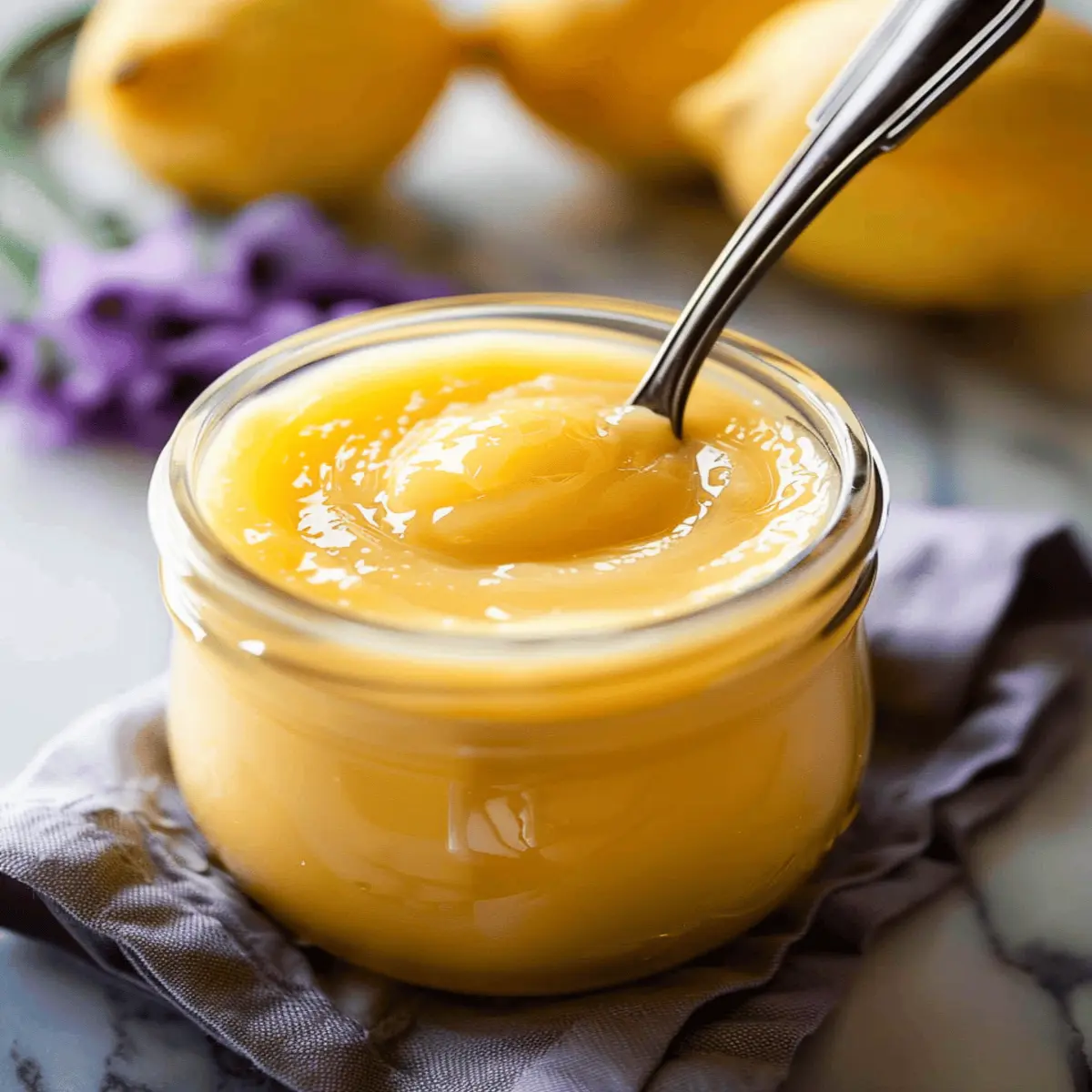
Serving Suggestions for Lemon Curd
Lemon curd is a versatile treat that adds a zesty kick to a variety of dishes. If you’re wondering how to make lemon curd shine beyond a standalone dessert, look no further! Here are some delightful serving suggestions that are sure to impress.
Spread on Toast
Imagine enjoying a bright, citrusy toast to kickstart your morning. Simply slather homemade lemon curd over warm, buttery toast or a flaky croissant. For an extra touch, add fresh berries or a sprinkle of powdered sugar. This simple pairing makes for a deliciously vibrant breakfast that will liven up your routine.
Filling for Pastries
Lemon curd makes an excellent filling for pastries, adding a refreshing twist to classic desserts. Consider using it in cream puffs, éclairs, or hand pies. Not only does it provide a creamy texture, but the tangy flavor cuts through sweetness beautifully. For more pastry inspiration, check out this Pastry Tips article.
Feel free to get creative! Whether used as a topping for pancakes or a dip for fruit, lemon curd is a versatile companion that can enhance countless dishes. What’s your favorite way to enjoy lemon curd?
Time Breakdown for Making Lemon Curd
When it comes to how to make lemon curd, knowing the time requirements is key to managing your kitchen time effectively. Here’s a quick breakdown to help you plan your baking session:
Preparation Time
Getting ready to whip up your luscious lemon curd takes about 10 minutes. This includes gathering your ingredients—like fresh lemons, sugar, and eggs—and zesting those bright citrus fruits.
Cooking Time
The magic happens once you start cooking. You’ll need about 15-20 minutes on the stovetop, gently stirring until that velvety texture forms. Precision is essential here, as cooking it too quickly can lead to a curdled disaster.
Total Time
In total, you’re looking at around 30 minutes from start to finish. It’s a small investment of time for a big payoff in flavor! For more tips on effective meal prep, check out resources from the USDA or FoodNetwork.
With just a bit of time and effort, you can create a delightful treat that elevates your desserts and breakfast spreads!
Nutritional Facts for Lemon Curd
Lemon curd is a delightful treat, bursting with zingy flavor that brightens up a variety of dishes. But how does it stack up nutritionally? Let’s break it down.
Calories per serving
A typical serving of lemon curd contains about 100 calories. This makes it a relatively modest option if you’re looking to enjoy a sweet spread.
Sugar content
When it comes to sweetness, lemon curd isn’t shy. One serving usually has around 12 grams of sugar. This is primarily from the added sugar needed to balance the tartness of the lemons. If you’re mindful of your sugar intake, consider reducing the amount to suit your taste.
Fat content
Surprisingly, lemon curd is also quite rich in fat, with approximately 5 grams per serving, mostly from butter. This creamy component contributes to its luxurious texture, perfect for spreading on toast or dolloping on desserts.
If you’re curious how to make lemon curd healthier, exploring alternatives like reducing sugar or using a healthier fat source could be exciting! You might also enjoy checking out resources like Healthline for more insights on nutritional information.
FAQs about Making Lemon Curd
Can I use bottled lemon juice?
When you’re eager to learn how to make lemon curd, you might be tempted to reach for that bottle of lemon juice sitting in your fridge. While it’s undoubtedly convenient, fresh lemon juice really elevates your lemon curd game. Bottled juices often lack the vibrant acidity and nuanced flavor of freshly squeezed lemons, which are essential for achieving that zingy, delicious taste. If you have to use bottled juice, opt for a high-quality one and be mindful of the amount—taste as you go to find the right balance!
How long does homemade lemon curd last?
Once you whip up a luscious batch of lemon curd, you’ll likely want to scoop it into everything from toast to desserts. But how long can you cherish this delightful treat? Generally, homemade lemon curd can last in the fridge for about one to two weeks. To maximize freshness, store it in an airtight container. For longer storage, consider freezing it! Just remember to leave some space in the container; liquids expand when they freeze, and you don’t want to end up with a mess.
Is lemon curd safe for pregnant women?
Pregnant women can enjoy lemon curd, but a few precautions are wise. The primary concern is the use of raw eggs, which can harbor salmonella. To soothe any worries, consider using pasteurized eggs or cooking the curd thoroughly to a safe temperature. If you want more tailored advice, consult with a healthcare professional, especially if there are any dietary restrictions.
For more detailed information on egg safety during pregnancy, check out the CDC guidelines.
Embrace your culinary adventure and enjoy that homemade lemon curd!
Conclusion on Making Lemon Curd
Creating your own lemon curd at home is not only a delightful culinary project but also a chance to elevate your desserts and breakfasts. The joy of homemade lemon curd lies in its fresh, vibrant flavor and the satisfaction of crafting something with your own hands.
- Use it as a topping for pancakes, spread it over toast, or incorporate it into your favorite cakes.
- Don’t hesitate to experiment with different citrus fruits for unique twists!
Learning how to make lemon curd is an accessible skill that enriches your kitchen repertoire. Dive into this tangy adventure and impress your friends and family with your newfound skill. Ready to make your kitchen brighter? Discover more recipes and tips on food blogging sites like Serious Eats or Bon Appétit for inspiration!
PrintHow to Make Lemon Curd: The Best Silky-Smooth Recipe
Learn how to make the best silky-smooth lemon curd with this simple recipe that brings vibrant flavor to any dish.
- Prep Time: 10 minutes
- Cook Time: 15 minutes
- Total Time: 25 minutes
- Yield: 2 cups 1x
- Category: Dessert
- Method: Stovetop
- Cuisine: American
- Diet: Vegetarian
Ingredients
- 4 large lemons
- 1 cup granulated sugar
- 4 large eggs
- 1/2 cup unsalted butter
Instructions
- Grate the lemons to get the zest and then juice them.
- In a saucepan, whisk together the sugar and eggs until smooth.
- Stir in lemon juice and zest.
- Cook over medium heat, stirring constantly, until thickened.
- Remove from heat and whisk in butter until melted.
- Strain the curd through a fine-mesh sieve into a bowl.
- Cool to room temperature, then refrigerate until set.
Notes
- For a richer flavor, use more egg yolks.
- Adjust sweetness by varying sugar to taste.
Nutrition
- Serving Size: 1/4 cup
- Calories: 150
- Sugar: 18g
- Sodium: 5mg
- Fat: 8g
- Saturated Fat: 5g
- Unsaturated Fat: 3g
- Trans Fat: 0g
- Carbohydrates: 18g
- Fiber: 0g
- Protein: 2g
- Cholesterol: 100mg
Keywords: How to Make Lemon Curd, lemon curd recipe, silky-smooth lemon curd
